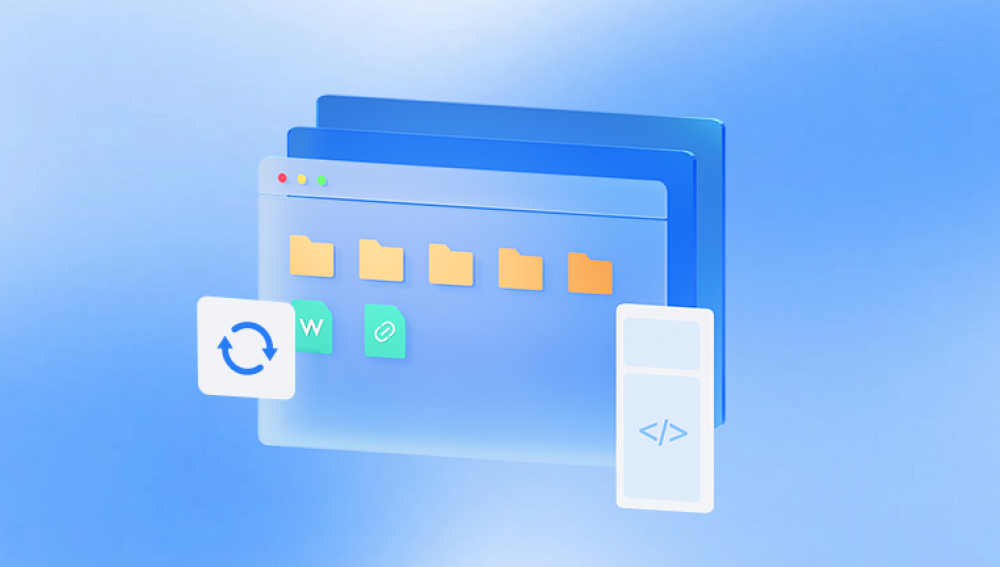Corrupted Excel files can cause serious disruptions, particularly when they contain important financial records, academic data, or complex formulas essential to your workflow. Excel file corruption often occurs unexpectedly through abrupt power outages, software crashes, malware infections, or improper saving techniques.
"Excel cannot open the file because the file format or file extension is not valid."
"The file is corrupted and cannot be opened."
"Errors were detected while saving."
These errors often hint at deeper issues in the workbook’s XML data structure or file integrity. Excel files, particularly those in the .xlsx format, are structured in a specific way using ZIP compression and XML coding. Damage to any part of this structure—be it the workbook settings, individual sheets, or macros can cause the entire file to malfunction.

Causes of Excel File Corruption
To effectively repair and prevent corruption, it helps to identify common causes. Some of the most frequent culprits include:
Unexpected System Shutdowns: Power failures or forceful system reboots while saving an Excel file can leave it in an unstable state.
Software Conflicts: Incompatibility with add-ins, outdated Excel versions, or malfunctioning antivirus programs can corrupt Excel documents.
Malware Attacks: Viruses can infiltrate and damage Office files, particularly if files are downloaded from unverified sources.
Large File Size and Complexity: Extensive use of macros, external links, or multiple embedded objects can increase the risk of corruption.
Improper File Sharing or Transfer: Files shared through unsecured platforms or improperly removed from USB devices are more vulnerable.
Benefits of Using Online Tools for Repair
While desktop recovery options exist (such as Excel’s built-in repair features), online tools have grown in popularity due to their accessibility and ease of use. Some of the key benefits include:
No need to install software
Compatible with various devices and operating systems
Support for multiple Excel formats
Fast turnaround for small-to-medium files
User-friendly interfaces
Online tools are especially useful for one-time users or those without access to full Microsoft Office suites.
Choosing the Right Online Excel Repair Tool
With many online services claiming to fix corrupted Excel files, it’s important to choose one that is reputable, secure, and effective. Some popular platforms include:
OnlineFile.Repair
Recovery Toolbox for Excel (Online Version)
Drecov Data Recovery
These platforms often allow users to upload a corrupted file, process it via remote servers, and then download a fixed version of the spreadsheet.
When selecting a tool, consider the following factors:
Does it support the specific Excel file format (.xls, .xlsx, .xlsm)?
Does it require a subscription or one-time payment?
Is the website secure and GDPR-compliant?
Are previews available before full recovery?
Are there file size limits?
How to Repair an Excel File Online: Step-by-Step Instructions
Here is a general outline of how to use an online repair service to restore a corrupted Excel document:
Step 1: Identify the Corrupted File
Locate the Excel file you are trying to repair. Ensure that it is saved locally on your computer and not being accessed from the cloud or a networked drive during the repair process.
Step 2: Visit the Repair Website
Open your browser and go to the repair tool’s website. Make sure the URL begins with "https://" to ensure it’s a secure connection.
Step 3: Upload the File
Most services have a straightforward drag-and-drop or upload feature. Click on the "Browse" or "Upload" button and select your corrupted file. Some services may also support Google Drive or Dropbox imports.
Step 4: Start the Repair Process
Once the file is uploaded, click on "Repair," "Start," or a similar button to begin the restoration. The tool will analyze the structure of the file and attempt to reconstruct any damaged components, including tables, cell values, formulas, and formatting.
Step 5: Review the Preview (If Available)
Certain tools provide a preview of the repaired file, showing a sample of the recovered content. This allows users to evaluate the quality of the repair before proceeding.
Step 6: Download the Repaired File
After the process is complete, download the fixed Excel file to your local drive. Make sure to open it with Microsoft Excel to confirm that the data and formatting have been restored correctly.
Step 7: Save a Backup Copy
Once your file is restored, save a backup copy in another location (e.g., external drive or cloud storage) to protect against future data loss.
Pros and Cons of Online Repair Tools
Online Excel repair services can be powerful and accessible, but they come with limitations. Understanding their advantages and drawbacks can help you make an informed choice.
Pros:
No installation required
Platform-independent (usable from Windows, Mac, Linux)
Ideal for quick fixes
Supports multiple Excel formats
Can be used on mobile devices
Cons:
May not work for severely corrupted files
Limited features compared to desktop software
File size restrictions (e.g., max 50 MB)
Potential privacy concerns with sensitive data
Often require payment for full recovery
Alternative Recovery Techniques
While online tools can be effective, they may not always succeed. If the damage is extensive or the service fails to deliver, you may want to try alternative approaches:
1. Use Excel’s Built-in Repair Feature
Microsoft Excel itself has a "Repair" feature that automatically activates when a file is detected as corrupted. If not, you can use it manually:
Open Excel and go to File > Open
Browse to the corrupted file
Click the dropdown arrow next to "Open" and choose Open and Repair
Select either "Repair" or "Extract Data" depending on your needs
2. Restore from Previous Versions
If you use Windows and have File History enabled:
Right-click the Excel file
Choose Properties
Navigate to the Previous Versions tab
Select and restore an earlier version
3. Recover from Temporary Files
Excel often creates auto-saved versions of files. These can sometimes be found in:
%AppData%\Microsoft\Excel\
Look for files with names like "AutoRecovery save of..."
You can try opening these in Excel or renaming the file extension to .xlsx.
4. Use Google Sheets
Sometimes Google Sheets can open files that Excel cannot. Upload the corrupted file to Google Drive and try to open it in Sheets. This workaround may allow you to recover some or all of the data.
5. Try a Desktop Recovery Tool
If online options fail, consider a downloadable repair utility like:
Drecov Data Recovery
Corrupted Excel files can disrupt your workflow, especially when they contain crucial financial records, business data, or personal spreadsheets. Fortunately, Drecov Data Recovery offers a fast and effective solution for repairing damaged Excel files and restoring your data with minimal effort.
When an Excel file becomes corrupted, it might fail to open, display unreadable content, or show error messages such as "The file is corrupt and cannot be opened." This can happen due to unexpected shutdowns, malware infections, bad sectors on storage devices, or Excel crashes. Drecov Data Recovery is designed to address these exact issues.
To get started, launch Drecov Data Recovery and select the "File Repair" option. Choose the corrupted Excel file from your system, and the tool will analyze its structure, identify broken elements, and begin the repair process. Using advanced file parsing technology, it recovers cell values, formulas, charts, and formatting without altering the original layout.
These typically offer more robust recovery options, including support for heavily damaged files and batch processing.
Best Practices to Prevent Excel File Corruption
While it’s crucial to know how to repair corrupted Excel files, it’s even more important to adopt habits that prevent corruption from occurring in the first place. Here are some best practices:
Always save your work frequently.
Enable AutoSave or AutoRecover in Excel settings.
Use reliable cloud storage for backup.
Shut down your system properly—avoid forced restarts.
Keep your Office software and antivirus programs up to date.
Avoid using overly complex or bloated Excel files.
Don’t open Excel files from untrusted sources.
Regularly back up important files on external media.
What to Do If Online Repair Fails
If online recovery tools are unable to repair your Excel file, don’t panic. Take a systematic approach:
Try other repair websites—different platforms use different algorithms.
Use Excel’s built-in features—attempt "Open and Repair" or "Extract Data."
Look for previous versions—Windows or OneDrive may have older iterations.
Use professional repair software—download and try a trial version.
Consult a data recovery specialist—if the file is extremely valuable and irreplaceable.
Prevention is the best cure. With Excel being such a powerful yet sensitive tool, investing time in understanding how to protect your data can save countless hours in the long run. Use cloud syncing tools with versioning (like OneDrive or Dropbox), set regular reminders to back up your work, and avoid leaving files open during updates or power outages.




